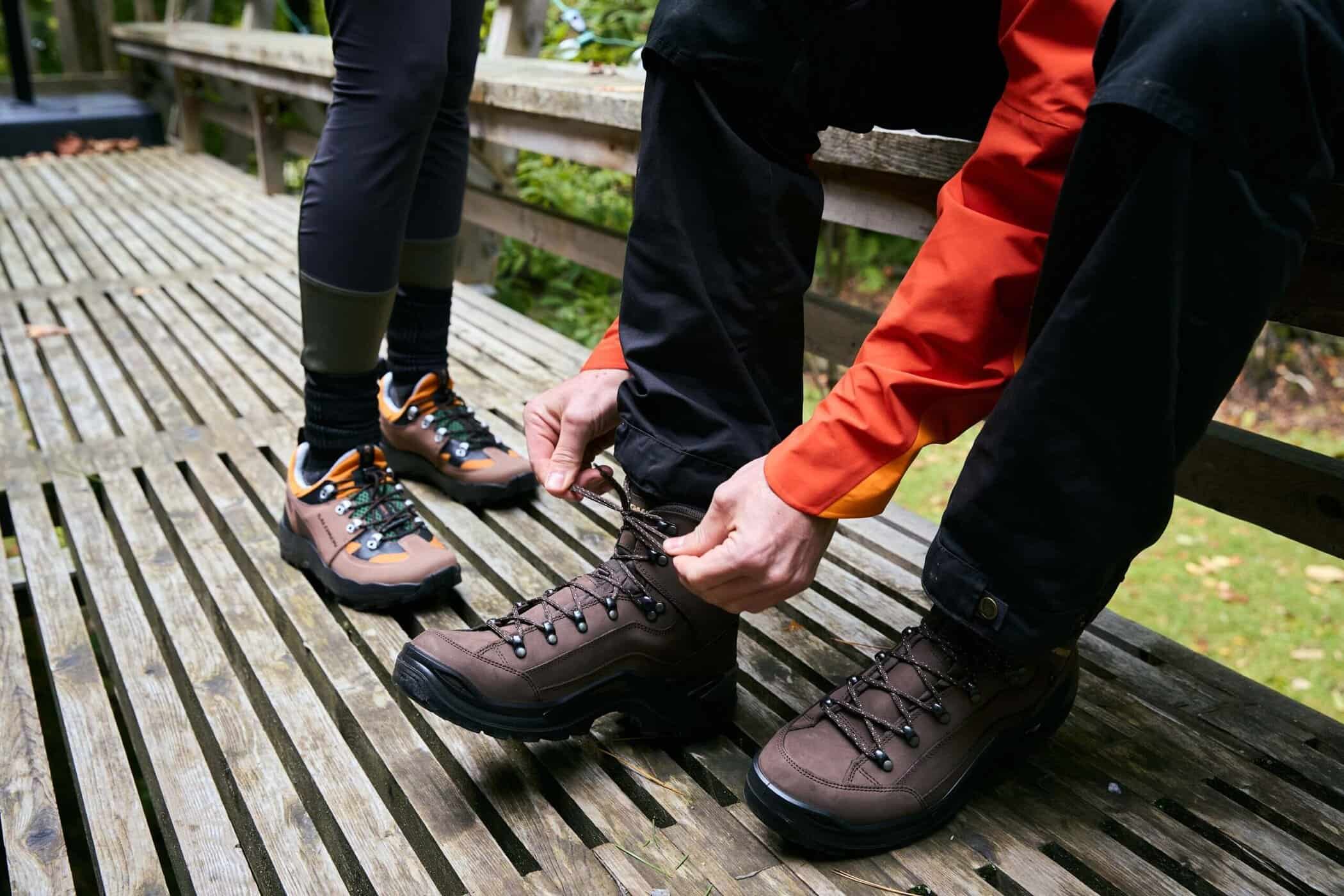We landed in Zurich on a beautifully warm Sunday morning in mid-April—a stark contrast from the almost winter-like weather we left behind in Montreal. We were greeted inside the hyper-modern airport terminal by Kris and Mark, Mammut representatives doubling as our tour guides for the next 6-days of adventure throughout Switzerland. Our journey had the goal of learning the ins-and-outs of their brand. We’d travel across the Alps to the Mammut headquarters in Seon, and up some of the most iconic ski slopes in Europe.
During our stroll through the quiet, modern city of Zurich, Kris mentioned that, “Sundays were often like this,” with everyone getting a late start and only a few shops opening at an early hour. We stopped at a chic-looking cafe near the Limmat river, one of the few spots with “öffnen” (‘open’) posted in the window. There we enjoyed coffee, eggs, biscuits, and all kinds of chocolate and cheese-filled delights.
After a delicious breakfast, we headed back through town to where we parked our tour van. Along the way, I couldn’t help but notice the contrast between the old architecture and the modern roadways that weaved through the city side-by-side with tramways and bike paths.

The journey to Mammut HQ continued with a drive from Zurich to Engelberg that led us through futuristic-looking tunnels under the mountains. The drive gave us plenty of opportunities to take in the beauty of the spectacular Swiss countryside. We arrived in the small village mid-afternoon and were met by a cluster of cottages surrounded from every angle by rolling hills and massive peaks in the distance.
We laced up our walking boots, and started our ascent to the outskirts of town, up steep hills, passing sleepy Swiss chalets homes along the way. Our long trek ended in the driveway of Flühmatt restaurant, where we were served traditional Swiss dishes by the family-owners who greeted us at the door. They led us to a table with a view of the village below and snow-capped peaks on the horizon. We drank beer, ate charcuterie, and stuffed ourselves with their delicious homemade macaroni and cheese.
Our appetites satisfied, we headed outside to the lookout in front of the restaurant. The clouds hung low over the valley. Across the village, we could see the towering chairlifts carrying skiers and snowboarders to the top of the mountain. We snapped a few pictures before heading down to the vehicles that would take us north to Lenzburg for the night.

We got an early start the next day. A quick breakfast was followed by a short drive to Seon, where we were going to be taking a tour of Mammut headquarters and have meetings with some of the key players in the company. We pulled into the driveway and were greeted by the large, iconic Mammut logo at the front of the building—a massive prehistoric mammoth with white tusks protruding from the head. Once inside, we were given a tour of the office that included a detailed history of the brand.
Founded in 1862 by Kaspar Tanner, a rope-making apprentice, Mammut evolved into one of the pioneers and leaders of the mountaineering and alpine hiking industries. Initially known for its climbing ropes and Swiss ingenuity, the brand quickly branched off into other sectors of the outdoor industry, including sleeping bags, apparel, safety equipment, and even hiking footwear.

Our tour led us through a hallway lined with glass cases on the walls. Each case contained one of Mammut’s original products, set beside the most recent interpretations of the same item. From their first sleeping bag to the original Eiger Extreme jacket, these displays showcased the evolution of the brand’s DNA. Driven and inspired to conquer their surroundings, Mammut incorporates a little bit of the Swiss landscape into each of their collections.
Switzerland is a small nation, but one with vast rural areas that are both serenely beautiful and imposingly daunting. The natural challenges of the Swiss Alps have driven the brand from day one. In 1968 Mammut designed the Barryvox VS 68, an avalanche transceiver used by the Swiss Army. The Eiger Extreme Collection, named after a 3,967-metre mountain in the Bernese Alps, blends functionality and comfort into apparel designed to perform in the most hazardous alpine conditions.

Innovation and evolution have continued to be a part of what makes Mammut a leader in the outdoor industry. In 2019 the brand introduced the Mammut Connect app that links users to a global network of outdoor enthusiasts. By simply scanning the Mammut Connect chip integrated into your product, you have access to the lifestyle and adventures of Mammut. It lets users explore alpine routes and photos, access GPS information, and receive up-to-date avalanche reports. The app’s key feature allows users to diary their adventures and share them with and inspire others.
The 2019 Mammut collection also featured a marked expansion for the brand’s product line. The Delta X Collection combines their sought-after technical and functional features with an urban style. Borrowing some of the technical detailing from the Eiger Extreme Collection, the Delta X Collection represents an evolution of the brand’s DNA and showcases their outdoor expertise in an urban environment. The collection is just another example of how far the brand has come—from their first climbing ropes in 1862, to 2019 where they have cemented their place as leaders in the outdoor industry, thanks to technical gear and apparel built to withstand any environment.

The final leg of our trip took us to Zermatt. The small town close to the Italian border is world-renowned for its skiing, and that’s where we got to test out some of Mammut’s latest innovations in Alpine apparel.
The town is car-free, and guests are shuttled in with electric vans. The residents move around on foot and bike, and those who come to visit are mainly there for the delicious cuisine, the fresh powdery skiing, and the amazing views of the Matterhorn. We spent a day exploring the Klein Matterhorn and stopped in Italy for a quick lunch of pizza, pasta, and pastries. The whole time our Mammut gear kept us warm and comfortable as we ventured through different climates, exploring the beauty of Switzerland’s landscape.

From Zurich to Zermatt, I was continuously reminded that mountain life was as much a part of Swiss heritage as it was Mammut’s history. Everywhere we went we saw the Mammut logo worn proudly on everything from jackets and sweaters to snow pants and bags. Even the National Railway staff wore Mammut gear as we headed from Grindelwald to Jungfraujoch.
The distinct Mammut logo represents the strength of the company, its products and most importantly, the heritage of its Swiss roots. It is a brand dedicated to inspiring outdoor exploration, on trails, slopes, summits, and streets around the world.
Share on








